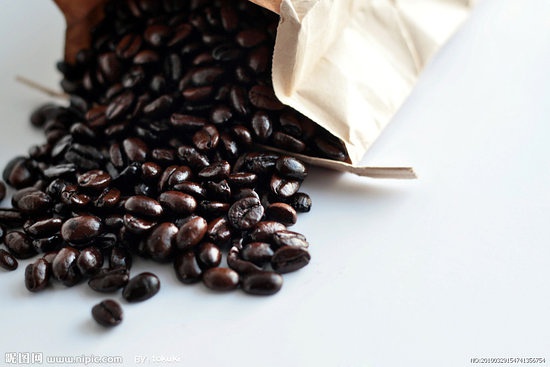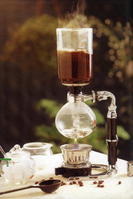A brief understanding of the varieties of coffee trees, a detailed analysis of the classification of coffee trees.
Different varieties of coffee beans have different tastes, but even the same varieties of coffee trees have their own unique flavor due to the influence of different soil and climate.

1. Arabica Coffee (coffeaarabica)
The Arabica coffee tree, which originated in Ethiopia, accounts for 70% of the world's coffee bean production. The world-famous blue mountain caffeine and mocha coffee are almost all Arabica species. Arabica coffee trees are suitable for growing in high mountains with large temperature difference between day and night, and ten soils with low humidity and good drainage; the ideal altitude is 500m ~ 2000, the higher the altitude, the better the quality. However, due to the weak resistance to diseases and insect pests, it is more difficult to grow than the other two coffee trees, they like mild days and cooler nights, too cold, too hot, too humid climate can be a fatal blow to it. Planting coffee trees in Elaraby needs to be planted on sloping slopes at high altitude, so harvesting must be done manually, which is extremely difficult. However, due to the excellent aroma, balanced taste and low caffeine content of Elaraby coffee beans, although it is not easy to grow, it actually accounts for about 70% of the total coffee planting. Such as the earthy mountains of Brazil, Mantenin of Colombia, Yemenmoka, the Blue Mountains of Jamaica, etc., are all high-quality coffee beans planted by Elaraby.
The two best varieties of Arabica coffee are Typica coffee and Bourbon coffee, of which Tipika coffee is prominent, and many varieties are transformed from it.

Typica Tippie truck
Typica is the oldest coffee tree. Tippica Coffee, native to Ethiopia and southeastern Sudan, is the most widely cultivated variety of coffee in the Western Hemisphere. Tippica has a low yield and is not resistant to leaf rust, with long, bronzed leaves and long oval beans, with a unique flavor, especially in sweetness, purity and mellowness.

Bourbon Bobangbang
The second species mutated from Typica is the closest to the original species as Typica at present. It was found in Reunion (formerly Bourbon) near Madagascar. It has the same high-quality taste as Typica, like the sour taste of red wine and a sweet aftertaste. The leaves of Typica and Bourbon,Bourbon can be distinguished from the leaves and bean appearance of coffee trees.
Strong coffee cherries are relatively small and dense, so the appearance of beans is smaller and more round than Typica. In Kenya and Tanzania, new artificial varieties "SL28" and "SL34" were produced by artificial mixing of Bourbon progeny, which is famous for its good flavor. Although the seed set of Bourbon is higher than that of Typica, the harvest time is also 2 years, which can be regarded as a variety with low yield.

2. Robasta Coffee Tree (coffearobusta)
The Robastian coffee tree, which originated in the Congo in Africa, accounts for about 20% to 30% of the world's production. Luoba Jinta coffee tree is suitable for planting in the lowland below 500 meters above sea level. it has strong adaptability to external environment, strong resistance to disease and high yield. It does not need much artificial care during soil preparation, weeding and pruning. It can be allowed to grow in the wild. It is a kind of coffee tree that can be easily cultivated. It is resistant to high temperature, cold, humidity, drought and even mold.
Its adaptability is very strong, it can grow very well on flat land, and harvesting does not necessarily need manual work, but can be carried out completely by vibration machine. As far as planting is concerned, Robasta has many advantages in growing coffee trees, but it is a pity that the coffee beans produce bad aroma, bitter taste, lack of acidity, and double the caffeine content of Elaraby. Robasta has more personality in the mouth of caffeine beans, which is mostly used for blending or instant coffee. Most of the Robastian coffee beans are small, of different shapes and sizes, and are not very good-looking. They are mainly produced in Uganda, C ô te d'Ivoire, Congo, say, Angola and other countries.

Compared with Arabica coffee beans, Robusta coffee beans are more round in shape, with a slightly inflated side in the middle, and straight grooves reminiscent of soybeans, while Arabica coffee beans are oval and zigzag, a bit like half a peanut. But its flavor is more bitter than that of Arabica.
The quality is also much lower, so it is mostly used to make instant coffee. In general, the coffee sold in fast food restaurants is mainly made of coffee beans grown in Robasta. Because it is made in Africa, most Africans drink robastian coffee.

3. Liberian coffee trees
The Liberian coffee tree is native to Liberia in Africa, and its cultivation history is shorter than that of the other two coffee trees, so it is limited to a few places such as Liberia, Suriname and Gaiana, so it accounts for less than 5% of the world's output. The coffee tree of Liberia is suitable for planting in the lowlands, and the coffee beans produced have a strong aroma and bitter taste.

Arabica and Robasta are common and common varieties of coffee for all of us, while other species such as Liberia are very rare.
Note: the above picture is not the right seat.
Source: network
Important Notice :
前街咖啡 FrontStreet Coffee has moved to new addredd:
FrontStreet Coffee Address: 315,Donghua East Road,GuangZhou
Tel:020 38364473
- Prev

African Coffee Manor the Black Gold Story of the "Coffee War" in the Coffee Bean producing area of Kenya
The quality of Kenyan caffeine is widely praised in the global market, known as black gold in the industry, but the industry has long been monopolized by Western multinationals. To this end, Kenya wants to attract Chinese and other Asian investors to the market, thus intensifying the business game. According to a survey released by the local media, six Western companies currently control about 60% of the Kenyan market.
- Next

What is the temperature of coffee brewing in siphon pot and several common points for attention in coffee siphon method
The water temperature should be controlled between 90 and 95 degrees Celsius. Generally speaking, when you boil the water, you should move the fire when the boiling speed increases, so as to reduce the water temperature. Coffee powder for brewing coffee needs a siphon pot. Here are the steps of the siphon pot. Another way is to use black tea filter paper, and then put coffee powder in the filter paper, with about 90 degrees of hot water can be brewed. The amount of powder can be measured with bean spoon, 1
Related
- What is the meaning of lactic acid fermentation with coffee bean treatment?
- How to judge the state of foam by sound?
- How does the latte pull out the unicorn pattern? Come to get for a little trick to improve the flower pull!
- Will flower pulling affect the taste of the latte?
- Do you know the history of coffee?
- The difference between honey treatment and sun washing what is raisin honey treatment?
- What kind of milk can a novice use to make coffee foam to keep the foam longer? The correct method and skills of milking tutorial sharing
- Why do washed coffee beans taste sour? Flavor characteristics of washed Coffee
- Introduction to the skill of how to practice the size and height of water injection around the circle of hand-brewed coffee
- How do beginners practice coffee flower drawing from scratch?

